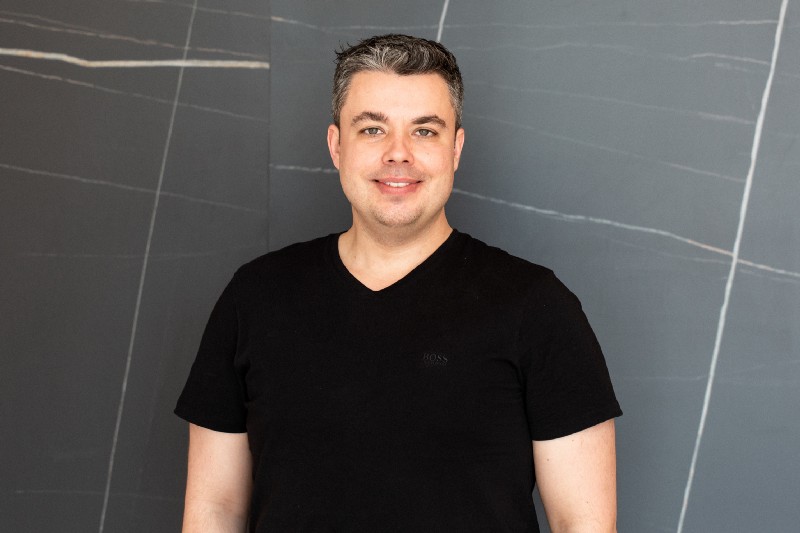Felix Staeritz, a serial tech entrepreneur, is Founding Partner and CEO of FoundersLane, a corporate company builder, and co-founder of a new European movement called Fightback, which aims to help European corporations adopt new business models. Staeritz, a speaker at the Platform Economy Summit in Frankfurt September 17 and 18, founded his first company when he was 16. He went on to fund several startups and platforms, including the food delivery service KochAbo which later merged with MarleySpoon. (The combined company IPOed for $150 million) He engages as a Digital Leader at the World Economic Forum, is a member of the Board of Entrepreneurship at Swedish energy company Vattenfall and is the co-author, with Simon Torrance, of a book that will be published in December entitled “FightBack, How to win in the digital economy with platforms, ventures and entrepreneurs.” Staeritz recently spoke to The Innovator about the Fightback movement and why Europe corporates should join it.
Q: What is it the Fightback movement and why are you launching it now?
FS: The era of digitalization threatens the very core of business as usual for established corporations. We are at a critical time for most incumbent organizations as existing business models are failing and corporations struggle to adapt to technological change. Some 85% of digital investments today have delivered zero or negative profit after cost of capital. The good news is that Europe has more than 3000 listed companies and a large percentage of big players in traditional industry sectors such as health, logistics, mobility, etc. These incumbents have a big unfair advantage if they manage to harness it. They have deep sectorial knowledge, large customer bases, strong brands, domain expertise, supplier networks, cash, intellectual property and government relationships. FightBack is a movement that not only includes company executives, entrepreneurs, academics, policy makers investors and entrepreneurs but also industries and nations, with the aim of building a pan-European ecosystem where knowledge, growth capital and technical capabilities can be shared and harnessed. FightBack is encouraging all of these players to get together to think about how to build new business models by collaborating with each other and using each other’s strengths. All large corporates have to transform but doing it by themselves is very hard. By collaborating it is easier to build bigger platforms that have more impact.
Q: What do corporates need to do to join the Fightback movement and which companies have joined so far?
FS: It’s an open platform. Everybody can join. We hold regular events with stakeholders all over Europe to educate each other and to talk about actions we can take together. We now have a couple of hundred of industry leaders officially signed up; Brigitte Mohn, Board Member of the Bertelsmann Stiftung strongly believes in this initiative; we have seen the engagement of traditional business, like Trumpf, among many others;and the World Economic Forum is a strong collaboration partner.
Q: There has been a lot of talk about platform business models at the Platform Economy conference in Frankfurt. Big Internet companies have clearly used this model to their advantage. How can established companies benefit?
FS: In our book we talk about how less than 2% of incumbents organizations have effective platform strategies today. Too often they use them for their existing business but platforms can be used in many other ways including creating new platform ventures; enhancing existing propositions; by selling and/or partnering through third-party platforms; creating enablers for platforms; partnering with third party platforms; creating or joining industry consortia; M&A, investing in third-party platforms; and perhaps most importantly by reinventing the entire business.
Q: What advice would you give traditional companies?
FS: Just do it. Don’t overthink it but understand that platform business models are totally different from what you have done before. In traditional businesses vertical thinking means that everything is very efficiently organized throughout the value chain but platforms are based on horizontal thinking. In other words, corporates will need to build a new setup. My suggestion is to not try to build it inside your own organization. It is also important to understand you will need people who have experience in building platforms. Don’t trap yourself with trying to solve the new problem with old solutions. Work together with entrepreneurs who have had some experience to reduce the risk. The direct engagement of the CEO is fundamental. The move to platforms entails transforming the whole business. It should be considered a top priority. I would suggest to set up a separate entity and to tie it to the established business through a new growth board. The board should include the company CEO to steer and drive the transformation and to ensure the link between the new business and the company’s existing core assets. You don’t want to build something totally disconnected. Your set of tools has to range from investing and buying to partnering and building. And by ‘building’ I am not talking about building prototypes but building real platforms or ventures and with that capabilities and an understanding of how to best leverage your assets to create value for customers and new sources of growth for the organization. Last but not least, let me tell you that the train is leaving the station. In some industries the train has already left! As Europeans we have the opportunity to leverage our assets and make the best use of them. If we simply wait others will take advantage of them; think of data, there are companies already using ours! Building platforms is a journey of five to 10 years. We need to start now and not in five years; we are already lagging behind, others have already started. And they didn’t start small! Here I am referring to a lot of Asian players. They have a lot of investment in this field. We can all learn from companies like [Chinese insurance giant] PingAn, which is a good example of how a traditional industry player transformed itself and built six unicorns in the last six years.







